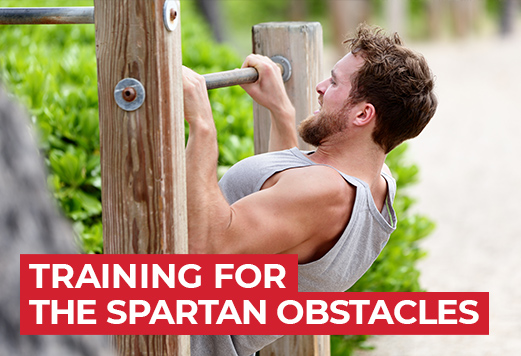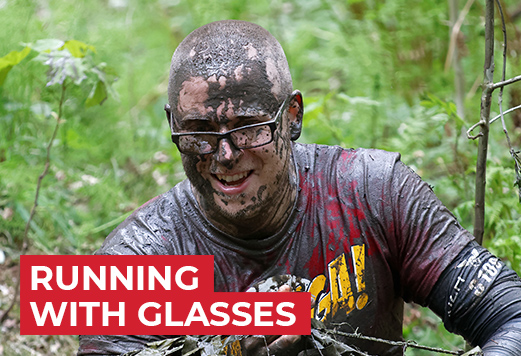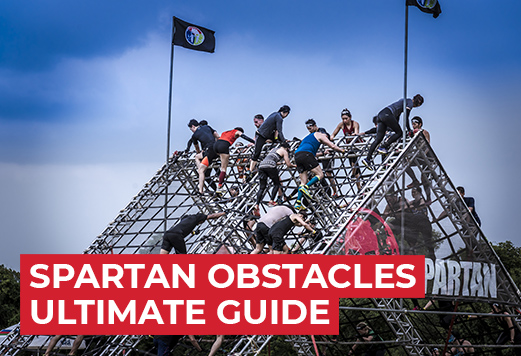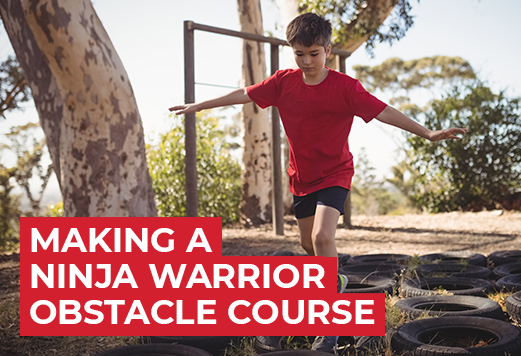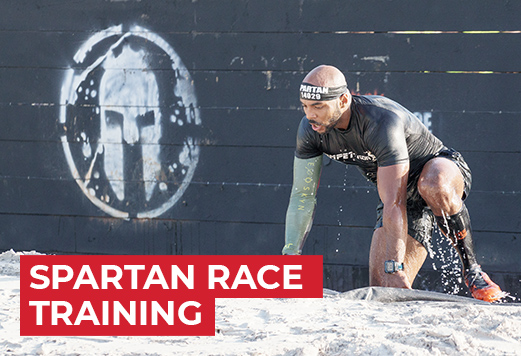Is Spartan Race Dangerous and How to Stay Safe
After multiple accidents, including death, is obstacle races, such as Spartan Race or Tough Mudder safe? Here are the dangers of obstacle racing.
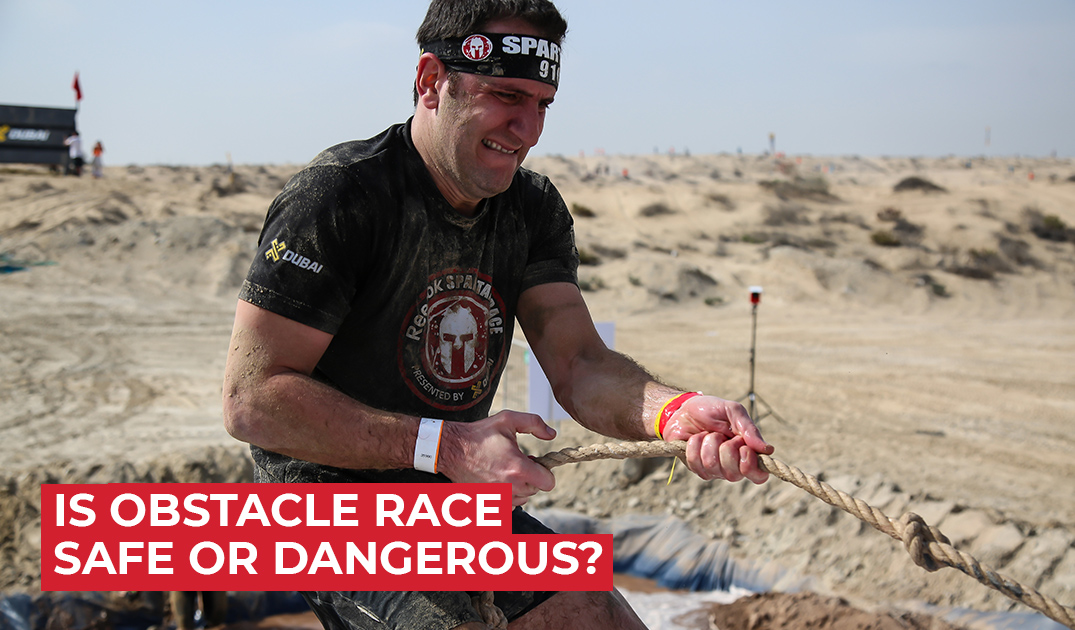

Like any other physical activities, obstacle race, like Spartan Race or Tough Mudder can be dangerous. You might have to flip a 300-pound tire, jump off a 15 feet platform or run downhill in a narrow trail filled with rocks. If you didn't train before the event or being reckless on the course, you could severely hurt yourself.
If you're searching for the best shoes to wear for a Spartan Race and expecting to find a real review from a real runner. Check out this list I created of the top OCR footwear.
I'm sitting in Munich airport, and with a 6 hours flights connection, I have enough time to go over an important question: Is Obstacle race such as Spartan Race and Tough Mudder, dangerous?
I remember reading an article about doctors who were seriously concerned with the severe accidents seen in obstacle races. The type of injuries that surpass the common sprains and scrapes from the regular competitions. Even with the occasional heart attack during marathons, they were more concern with the different dangers from obstacle racing.
Sure if you mix running with slippery mud and odd obstacles to climb, you are bound to have a portion of the participants who are unprepared for such challenges. Wich will result in various injuries.
Just take a look at the explicit tagline from Tough Mudder: Probably the toughest event on the planet. The danger aspect is a massive part of the marketing campaign, and people love it. Every year, only in the United-States, it's more than a million people who are expected to stand on the starting line of an obstacle race. That a lot of people willing to pay the big buck (up to $200) to jump over the fire, roll under the barbed wire, dive into ice-cold water and getting zapped by 10,000 volt live wires.
It's evident that danger is something appealing for a portion of those participants. However, those dangers seem controlled, and safety is an illusion that comes with thinking it's safe because other people are doing it.
Those doctors are probably rights, and the variety of possible accidents are a sign that obstacle racing is dangerous.
However, no sport is 100% safe, and the risk is everywhere. Among every activity, people can hurt themselves whether it is on a treadmill at the gym or cleaning the house. The accident rate during obstacle races such as Spartan Race is not higher than any other sport. The following article is not meant to scare you from doing a Spartan Race; the goal is to point out the possible danger and teach you how to stay safe.
Let's take a look at the accidents which occurred in past events.
What are the dangers?
There is different kind of danger in obstacle races, and some are scarier than the others. After researching the subject, I've found the most common risk related to obstacle racing. Let's take a look at the various danger of this sport.

1. Dehydration
It's inevitable in all outdoor sports, dehydration is a well-known danger, and that's why my son's baseball coach is continuously telling the team to drink water.
In almost every obstacle race, a bunch of participants will be taken to the medical stations to be treated for dehydration. Many beginners underestimate the importance of drinking water, and they end up dazed or even unconscious.
This is what happens during a Tough Mudder in New Jersey, in 2013. An experienced participant, who had correctly trained before the event, and had already done similar endurance competition. This 6-foot tall runner was dehydrated before entering the Electroshock Therapy, a signature obstacle for Tough Mudder filled with 10,000 volts live wires. The electrical shocks knocked him unconscious, face front in the dirt. They had to cut the electricity to rush him out of the obstacle.
Obstacle races are brutal, and participants must be adequately prepared to face such a challenge.
How to stay safe: Drinking enough water before and during the race is one of those fundamental rules not to forget.
For more information on hydration, check out this article I wrote about the best hydration pack for an obstacle race.

2. Muscle tears
A muscle tear happened when you overstretched muscles. A pulled muscle can occur when you try to lift something heavy, and even anywhere on the course because your body is fatigue.
This type of injury can happen especially during a Spartan Race, with strength obstacles such as the Hercule Hoist or the Tire Flip. However, it's not an injury unique to Spartan Race, and it can happen during any obstacle races.
How to stay safe: Train properly before the event.
For more information on training, check out my guide on how to train for a Spartan Race.
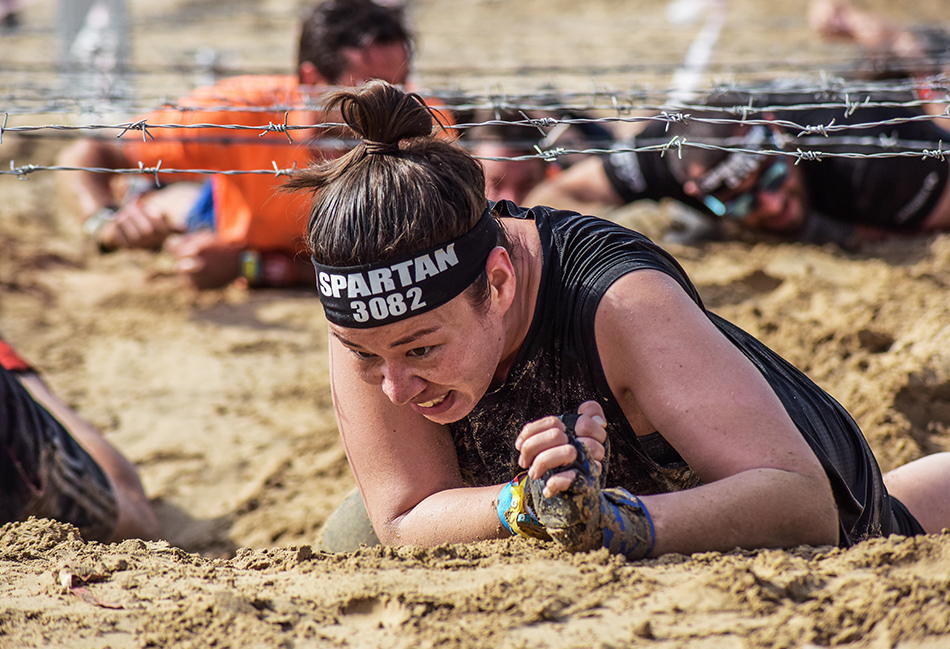
3. Sprains
Another common injury among Spartans and Mudders is a twisted ligament, also called sprains.
Your feet, ankles, and knees are vulnerable during such events, because of the brutal terrain. How many participants have twist an ankle while running downhill or jumping of an obstacle? Probably more than we think because it's not every injured person who reports to the medical stations. Many people will think it's just normal pain from such extreme race. However, it's only a 2 or 3 days later they realize their ankle is getting even more swollen, and they require medical help.
It's not just your lower body who's at risk, but also your elbows, shoulders, and wrist. Some participants have dislocated their shoulder while hanging from the monkey bars or throwing the spears.
If your body is not used to move in such ways, you are putting your self at risk. However, these injuries can happen while working or playing with the kids. When our body is not used to a specific range of movement, we can even twist an ankle while walking at Costco.
But there is also the overuse injuries, that happen after one of the too many repetitions of the same movement. A common injury of this type is the IT band syndrome (iliotibial band) and plantar fasciitis. Those are very common in all running sports. They are the result of an accumulation of action instead of a particular event.
In this case, it might be your running form or muscular imbalances, and it could happen during your Sunday jog around the neighborhood. It's not unique to obstacle racing.
How to stay safe: Reserve enough time to train before the race.
For more information on training, check out this article I created on how to train for an obstacle race.

4. Obstacle accidents
Some obstacles are better at producing injuries, and it's the case with the well know Electroshock therapy at Tough Mudder.
The outcomes of getting electrocuted may vary from headaches, seizure, confusion, temporary paralyzed, loss of consciousness and failure of bladder control. Furthermore, a Long Island resident has filed a lawsuit again Tough Mudder, after almost losing his right leg because a piece of metal has transpierced his knee. This incident happens in the murky water under the Electroshock Therapy.
Another pretty scary accident implicated a rolling 300-pound tractor tire and a Spartan Race participant. Has you can see in the following video, the tire used for the Tire Flip obstacle went flying downhill and almost kill one participant. The race organization decides it was a good idea to put the giant tracker wheel on top of a hill.
The obstacles are getting upgraded every year, and sometimes what seems safe this year might not be the next year. I remember the time when many obstacles were made of wood. The problem with such materials is degradation. It was not rare to hear a story about someone who caught splinters or cuts from rugged wood.
Even if the race organizations are doing their best to create safe obstacles, a mistake can occur, and you must always be aware of your surroundings.
How to stay safe: Next time, you step on the obstacle, watch where you put your feet!
For more information on obstacles, check out my list of tips on how to conquer Spartan Race specific obstacles.

5. Infections
While participating in an obstacle race, especially a mud run, where murky water is part of almost every obstacle, the danger might reside inside the mud.
You are especially vulnerable to infection if you have cuts or fresh wound and jump into the mud puddle. The problem is not the mud itself but another ingredient that can find its way into the party. Many muds run are held in rural areas with farms or broad wildlife. The bacteria can comes from the animal's feces that naturally find it's way into the mud. Also, in agriculture, farmers will use animal feces as fertilizer and spray the whole field. Which eventually get mix up in the dirt.
Furthermore, you can get an infection if you get mud in your mount, nose or eyes. However, it's not automatic that you'll get infected. Most of the time your body won't react if your immune system is robust.
Nevertheless, if 2,000 participants cross an infected mud puddle, you're sure to get a couple of infection cases. And it precisely what happened in numerous races over the past years.
For example, in Nevada, 22 persons who participate in a mud run, caught the Campylobacter Coli infection. This type of mud infection is common, and the symptoms can vary from cramping to bloody diarrhea. Accordingly, to the CDC, this illness can last up to a week. Plus, the lucky peoples who get the red poop also required proper medication to curred the infection.
The Campylobacter incident involving 22 peoples, lead to a special investigation by the CDC. The search for the source of the infected mud was also linked to another accident in a mountain bike race, where participants also got infected. It seems they swallow a little bit of mud that splashed in their mouths. Those few drops were enough to start an infection.
Another major infection incident occurs in France, where a 1,000 participants contract the Norovirus. Another virus that leads to vomiting and wild diarrhea for up to 5 days.
Such infection can be deadly if not treated properly.
Some infections can also have severe consequences. For example, in Texas, a woman participating in a mud run has unfortunately contracted the flesh-eating bacteria in one eye. The doctor seems pretty convinced that the infection came from the mud. Unfortunately, she lost sight in the eye.
However, infected mud is not unique to mud runs and obstacle races. You could catch any of these infections while camping or playing with the kids at the local park.
How to stay safe: Be careful not to swallow mud and don't go in the mud if you have a fresh wound.

6. Broken bones
From all the possible accidents during an obstacle race, the result is often broken bones. This type of injuries mainly occurs with participants, who are not physically ready for such challenges. However, if you are not careful on the course, it can happen to anyone. The obstacles are slippery, your body is exhausted, and all you can focus on is reaching the finish line. This combination can lead to severe accidents.
Think this won't happen to you? Think twice!
A well-trained police officer, who participated in the Extreme K Mud Run in Silverdale (Washington, United-States), left the course with multiple bone fracture in her foot. She was not a beginner to obstacle racing and was in good shape at the time of the accident. The problem was the poor design of the obstacle, the steep pitch and a pile of rocks. The obstacle called “Gravity’s Revenge” was a water slide along a hill that had a very poor landing. Her and two other participants who suffer from similar injuries have sued the organization. The last Extreme K Mud Run was in 2012.
Sometimes it's not the participant fault, and it's the race organization who fail to create safe obstacles.
How to stay safe: Always observe the obstacle and the participant in front of you, before doing it.

7. Paralyzed
Some injuries are more severe and permanent than the others. It's the case with participants who injured them self severely and became paralyzed.
During a Mud run in 2010, a wild participant has dive head-first in a pool of murky water. Unfortunately, the water was shallower than it seemed and no warning sign or supervision were warning the participants. The same thing happens in 2011, during Warrior Dash in Michigan. Both accidents lead to lawsuit again the race organization.
In 2013, another person had underestimated the deepness of a mud pool and die after jumping head first from a 15 feet obstacle.
At first, I was wondering why people feel the need to jump head-first into dark water or simply do something they usually wouldn't have felt comfortable doing. The answer is peer-pressure. You are all pumped up on adrenaline, people are cheering, and you have a second to take the decision.
It's precisely what happens to a man during a Spartan Race at Toro County Park. At mile 3, the 25-year-old Spartan was standing 10 feet above a pool of muddy water, with no warning sign or staff member and the crowd was cheering. In a matter of second, the race took a wrong turn when he decides to dive in the shallow water. He ends up breaking two vertebrae, and he's now quadriplegic.
Another horrible example of peer-pressure happens during a Spartan stadium race at the Citi Field course. A New Jersey woman was facing the monkey bar obstacle and were not sure of her ability to complete the obstacle. A volunteer offers his help by taking the participant on his shoulder to complete the obstacle. She decided to accept the offer to skip the 30 burpees penalty from failing the obstacle. While carrying the women on his shoulder, the volunteer lost his balance, and the women landed on her neck. The mother of four is now paralyzed from the neck down.
After those accident Spartan Race have significantly improved the security measure to make sure it never happens again. Even if I trust Spartan Race to do the right thing, I'm always careful during a race and prefer to take more time on the course than ending up injured for life.
How to stay safe: Know your limits and listen to your self only.

8. Drowning
Unfortunately, tragic accidents have occurred during obstacle races. They are rare cases where participants have drowned in water obstacle.
During Tough Mudder, participants have to jump 15-foot down into cold water. If people are not careful and the obstacle supervisor loses control of the crowd, terrible accidents can happen. It's precisely what occurred to a man in 2012 when he disappears under the water for more than 8 minutes. He and more than a 100 participant were heading into a 40 feet wide platform with a 15 feet vertical wall above water. Everyone has to jump and swim to the other side of the obstacle. Participants must wait for their turn before jumping, but mistakes can happen, and it's precisely what happens on that day. In the following video, you can see another person jumping in the water on top of the other participant.
This accident could have been avoided if volunteers have been placed on the platform, managing who's jumping and when.
Another drowning happened during an obstacle race in 2012. A 30-year-old man participating in the “The Original Mud Run” has drowned while swimming across a river. His friends were cheering from the bridge above, and taking pictures. They got nervous when they didn't see him at the finish line. In the chaos of the race, the lifeguard was overwhelmed with the number of people in the water and didn't notice the men drowning.
Today, in most obstacle races involving deep water, safety devices are mandatory and more lifeguards are supervising the water. I consider my self a good swimmer, but after hours running, I wouldn't go in the water without a life jacket. Cramping or pure exhaustion can occur anytime, anywhere.
How to stay safe: Communicate with other participants around you and make sure to remain visible. When available, use the life jacket.

9. Overheating
The heat is also a danger during obstacle race. Most races are held during summer, because the weather is more prompt for outdoor activities, especially in the areas where they have snow during winter.
The problem is your body temperature is already increasing because of the physical activity, and if you are running during a hot summer day, it can lead to severe consequences.
When our body temperature rise, the blood flow increase and that puts a stress on the heart. Also, we are producing significant amounts of sweat, which causes dehydration and more strain on the heart.
In 2011, during a Warrior Dash race, the temperature was reaching above 100 degrees in Kansas City. One participant has collapsed on the course and was rushed into the hospital. He died from multiple organ failure. During the same event, another man also died from heatstroke.
Most race organizations will cancel the event if the temperature is too high, but you can also take extra steps to stay safe during such warm days.
How to stay safe: Make sure to drink water every 15 minutes and remain in the shades as much as possible. Also, make sure to wear the proper clothing to stay cool.
For more information clothing, check out my article on what to wear for your next obstacle race.
Conclusion
Dangers are part of any sports, and that's why we have to take the necessary measures. To stay safe during an obstacle race, and avoid injuries, I suggest you consider the following tips.
First, always respect the rules, wait for your turn and listing to the obstacle instructions. Take your time on the course, drink enough water and don't eat the mud (seriously).
The most important precaution you could take before the race is to train accordingly and don't underestimate the challenge you'll be facing.
P.S. If you're searching for the best shoes for a Spartan Race and hoping to get genuine advice from a real runner. You should check out this list I created of the top Spartan Race shoes.
I have picked these running shoes because I'd used them in different obstacle races and mud runs. Plus, I'd confirmed my selection with my fellow OCR runners. With all their insights and my own experience, I've built this list of the top obstacle racing footwear.

Thank you for reading!
Hi, I'm the Obstacle Ninja, and I will share with you my tips on how to crush it at your next obstacle racing. Also, how to get your little ninja more active with obstacle course. Want to know more about me? Read my story!

Hi, I'm the Obstacle Ninja, and my passion is OCR (obstacle course running).
My idea of the perfect weekend is to run a Spartan Race or Tough Mudder with my family. We love to run in the mud and challenge your self with the obstacle. My kids and I, we love to watch Ninja warrior and train for our next obstacle race or mud run.
I will share with you my tips on how to crush it at your next obstacle racing. Also, how to get your little ninja more active with obstacle course.
Want to know more about me?
Read my story!
Got questions? Contact me!

